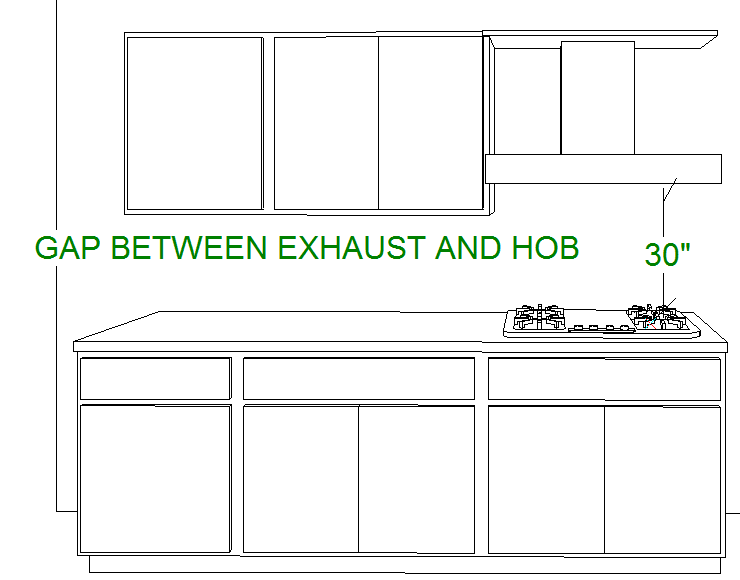The gap between the hob and the exhaust hood is a crucial aspect of kitchen design, impacting both safety and the efficiency of the ventilation system. The ideal distance between the two should be 30 inches. This specific measurement is recommended because it strikes the perfect balance between safety, functionality, and aesthetics in the kitchen environment.
Why the 30-inch gap is important:
- Safety Concerns: If the gap between the hob and the exhaust hood is less than 30 inches, there is a higher risk of injury. For example, while cooking, you may accidentally hit your head on the hood. This could not only lead to injury but also interfere with your comfort and movement while working in the kitchen. Additionally, placing the hood too close to the hob can expose it to extreme heat, potentially causing damage to the hood’s materials and shortening its lifespan. Therefore, maintaining a minimum of 30 inches ensures that the hood is at a safe distance from the cooking surface.
- Ventilation Efficiency: On the other hand, if the exhaust hood is placed more than 30 inches above the hob, it may not function effectively. The purpose of the hood is to capture smoke, steam, grease, and odors produced during cooking. If the gap is too wide, these fumes may disperse into the kitchen before the hood can extract them, leading to poor ventilation. This defeats the purpose of having an exhaust hood and can result in unpleasant odors and a greasy kitchen environment.
In conclusion, maintaining a 30-inch gap between the hob and exhaust hood ensures optimal safety and functionality. It allows for proper ventilation while keeping the cooking area free of hazards. This balance is critical to ensuring a comfortable and efficient kitchen environment.

